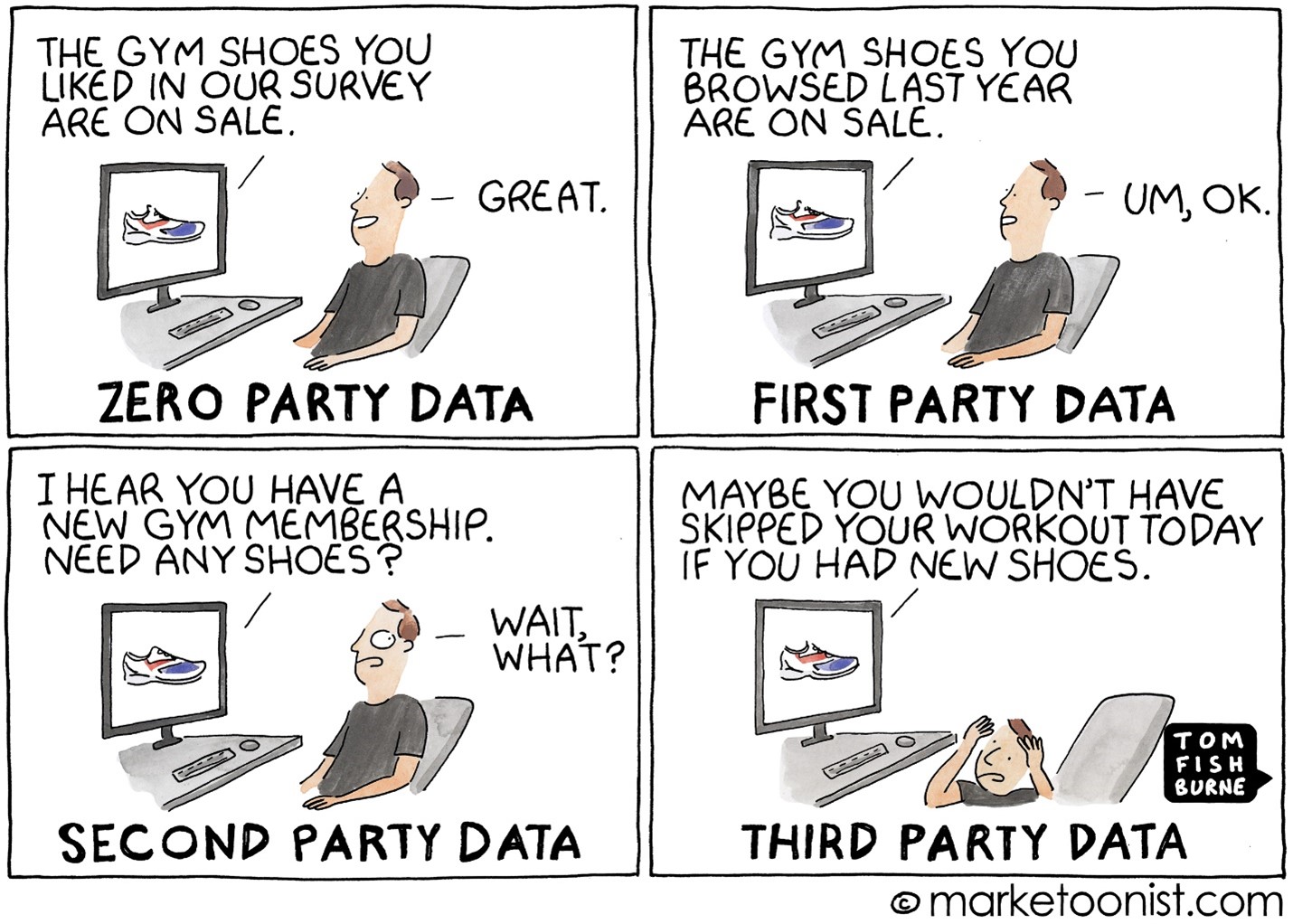Worried About Losing Cookie Tracking? Look To Your Loyalty Program
Although Google recently announced that it will delay the demise of the cookie, data deprecation continues to be a big challenge for marketers. Expanding privacy regulations, the rise of software to block ad tracking, and the eventual loss of cookies is making third-party data much more difficult to capture. There will be no “find and replace” for the third-party cookie. But here’s where a loyalty program can really help. Brands can leverage loyalty programs to take Forrester’s advice: Keep investing in first- and zero-party data assets because consumers will share personal information in exchange for some type of value.
 (I licensed this from marketoonist.com for corporate blogs.)
(I licensed this from marketoonist.com for corporate blogs.)
Loyalty programs are a great way to collect zero-party data because brands can reward the customer with points, badges, or special offers directly through their program. And those offers can become increasingly personalized as you collect better, more relevant information. Willingness to share information is varied across countries, but 63% of US online adults and 71% of Italian online adults are motivated to share personal information with companies for perks like cash rewards, loyalty program points, early access to new products, and other value.
Zero-Party Data Is More Effective Than Third-Party Data For Personalization
Think about it: Outside work, you are a consumer. You are probably contacted regularly by brands with offers that are only vaguely interesting to you because you were grouped into a broad segment based on tracked cookies from a recent web search (e.g., vitamins for women). How often do you even look at the offer, never mind click on it? But if you received a special discount offer for something that was truly relevant — say dog food for large working dogs — because you’ve told a brand that you have a Bernese mountain dog at home, would you be more interested? When that brand asked you to answer a single question and you responded, they might have put 100 points into your loyalty program.
Since the start of the pandemic, brands have been investing in existing and new loyalty programs at an unprecedented rate. Brands in industries that were severely impacted (like beauty salons, spas, and restaurants) wanted to stay engaged with their customers. And brands that have benefited from the pandemic (like home improvement and gardening stores) want to retain all the new customers they’ve gained.
But if brands aren’t trying to collect zero-party data, they aren’t taking full advantage of their loyalty programs. The data you collect has value well beyond personalization. You can track customer sentiment and emotions toward your brand or products with it (emotional loyalty), learn more about what your customers are thinking about (market research), and use it for benchmarking and identifying the types of new customers you want to attract (improving performance).
Start Collecting The Zero-Party Data That Your Brand Can Use Appropriately
Check out Forrester’s An Illustrated Guide To Collecting Zero-Party Data to learn how to use quick polls, fun quizzes, or website widgets to get started. Build these tools into your loyalty app, and pull the data back into the customer database that is integrated with your loyalty program. But take care to avoid the common pitfalls of collection. Follow these three rules:
- Collect only the data that you will use. You are wasting your time and that of your customers if you ask for more.
- Use the data to deliver relevance. When you use information you’ve collected, make the best use of it. Send the personalized offer or measure that customer’s sentiment and track the results. Stop sending generic offers — you want to keep your customers’ attention.
- Reward the customer with some value. Whether it’s immediate value like a badge or points or a value delivered later, like a great product recommendation with a free sample, make sure you provide value. Consumers who don’t see results from the information they share will stop responding and may even drop you.
Meanwhile, if you are considering defining a loyalty strategy, revamping your program, or choosing providers to assist, I’m available via an inquiry to give you tips or help get you started.
